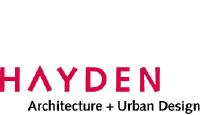
KinderWorks
1: Example Project Design Layout
2: Selected Facility Standards
3: Example Project: Montgomery
Coordination with the Local Client
The local client is the institution or company in partnership with KinderWorks/Mini-Skool to build a preschool facility. This page is intended to provide an overview to local clients of the architectural process with the enumerated steps above illustrating the graphic components of the process. Mouse over the images above to see each one in detail at the right.A KinderWorks facility is a cooperative effort by the KinderWorks "facility architect" and the local client's "project architect". The KinderWorks facility architect has the task to implement the teaching environment described at right. No more control of the project than required to accomplish that goal is desired, but that goal is demanding and thus the facility architect will provide complete schematic design for the interiors, as well as providing details for all interior elements other than basic construction. Even interior lighting design and finish selections will be provided. These will be given to the local project architect in an editable CAD format for use in developing the construction drawings.
Since, the project architect office will be providing the record drawing set and incorporating the provided drawings, they have full review of any provided layout and details with complete liberty to change any provided detail if it does not impact the function or appearance (such as changing the underlying construction).
The project architect will also have control of site design, the shell building, mechanical system design, and plumbing/electrical distribution design. The facility architect’s control of the interiors is a common arrangement between base building architect and interior architect. Site and building design must be coordinated with the program needs of KinderWorks. The local project architect would assume all permitting, bidding, negotiation, and construction administration services as normally provided.

© 2008 Hayden A+UD
KinderWorks Facility Concepts Presentation
KinderWorks Approach
KinderWorks integrates various philosophies: Reggio Emilio, the Montessori method, the developmental psychology of Piaget, Katz, Bruner and Gardner's theories of multiple intelligences. The KinderWorks approach to teaching includes the following: assessment-based thematic curriculum, alternation of learning modalities (structured / child-initiated & left brain / right brain), team teaching, and rotation through differentiated specialized classrooms. The movement from one curriculum area to another contributes to an overall balance since structured academic work, which focuses the children in left-brain activity, is followed by a child-initiated independent period, with activities targeting the right brain. Children move through the school in the company of their Group Teacher and classmates, with the benefits of a team of teachers. The four principle classroom areas are: Language Arts, Creative Expression, Science and Math, and Gym and Music. Each area is separated by teaching styles, time frames, space design, special features and materials. Within a classroom there are a subset of differentiated areas based on learning modalities used for that learning environment, which includes special elements, such as play house and complimentary finishes and lighting.Plan Concept
The room environment is sometimes referred to as the "third teacher" because of the beneficial impact an appropriate design can have on teaching (the first "teachers" are peers and teachers, and the second is appropriate developmental materials.). To give the learning environment clear order, the plan concept arrays the classrooms around a central atrium core. The central Atrium is similar to Reggio Emilio designs in Italy. It functions as the heart of the facility, a place for community and classroom observation, and a gallery of the children's work. The wisdom of the center court became clear in looking at facilities with corridor layouts. In comparative analysis it was discovered that less square footage was used to create an open atrium than in the creation of long corridors - using less space in a smarter way. The arrangement of the classrooms around the atrium requires a specific adjacency to facilitate the class rotation between the specialized classroom environments (curriculum areas).